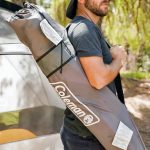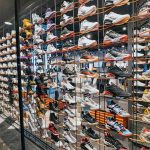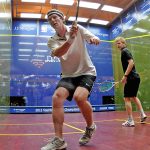Puma AG said they are two years into their “Phase III” growth plan and believe they can exceed market growth for the balance of the Phase III period that runs through 2006. They see gross margins that continue to run in the 48% to 50% range, SG&A in the 29% to 30% range and net margin between 13% and 15%.
Sales for 2004 are expected to grow approximately 10% with earnings matching sales growth and gross margin estimated to be “at least” at last years level.
The company feels they are making real headway with their “quality distribution” philosophy, pointing to the fact that Puma is now one of the lading footwear brands at Nieman Marcus in the U.S. They may also see a potential shift in the sophistication level of the U.S. consumer, pointing to the metric that a European style product is now one of the top footwear sellers at retail. “Originals” are now less than 10% of their business and they have no “Originals” product in the Top 10 styles.
In a conference call with analysts on Friday, company chairman Jochen Zeitz said he wanted to turn Puma “into an adjective” with the consumer, with people looking at product as “Thats Very Puma”. He vowed that no Sport product will be in the range without and element of Lifestyle and no Lifestyle product will make the range without an element of Sport.
It appears that some of the Performance product is getting play as well, with futures for the “Team” product up 58% at year-end and Running product up 200%. Total backlog was up 36% when measured in Euros, but up 42.2% on a currency-adjusted basis. U.S. futures growth, which lagged the other regions, was up 18.7% to $119.3 million at year-end.
Management said worldwide backlog for Q1 at year-end was up 24.4%, or 24.0% currency-adjusted.
Second quarter backlog was up 50.7%, or up 32.2% excluding Japan and currency-adjusted, and Q3 was up “double-digits” off of a low base.
Puma AG reported that Q4 consolidated sales increased by 27.1% to 227.7 million ($271.1 mm) or up 35.4% on a currency neutral basis. Total “organic growth” was 20.4%, which excludes the effect of currency exchange fluctuations and the first-time consolidation of Puma Japan. The “book-to-bill” ratio for the quarter was said to be 90/10 futures to fill-in.
Company-owned retail was up 47% to 32 million ($38.1 mm). Retail comps were said to be up “strong double-digits” for the period.
Apparel sales for the quarter were up 17.6%, or up 26.4% currency adjusted, to 68.8 million ($81.9 mm). Footwear sales grew 27.5%, or 33.7% currency adjusted, to 140.4 million ($167.2 mm), and Accessories increased 76.7%, or 82.6% currency adjusted, to 18.5 million ($22.0 mm). Excluding first-time consolidation of Puma Japan, footwear was up 14.7% and accessories increase 29.8% currency adjusted.
Gross margin in Q4 improved 320 basis points to 47.5% versus 44.3% in Q4 last year. Gross margin in the U.S. rose 160 basis points to 46.3% from 44.7% in the year-ago period. Net income for the quarter was up 95.7% to 24.5 million ($29.2 mm), or 1.29 ($1.54) per diluted share, compared to 12.5 million ($11.8 mm), or 0.76 (72¢) in the year-ago period.
For full year 2003, sales grew 40.0%, or 48.4% currency-adjusted, to 1.27 billion ($1.44 bn) from 909.8 million ($860.6 mm) in 2002. Currency-adjusted sales growth was as high as 48.4%. Total currency-adjusted “organic growth” was 39.0% compared to last year.
Footwear sales before first-time consolidation of Puma Japan were up by 29.4%, or 37.0% currency adjusted. The Accessories segment was helped by the first-time consolidation of Japan which had a 30.7% increase in the accessories business in that country.
Europe, which represented 66.9% of consolidated sales, saw apparel grow the most, increasing sales 53.1% for the year. Footwear in Europe 31.6%, and accessories growth was flat. All markets in the region showed double-digit growth. The company said they usually dont et any real lift from the Olympics or this years European Championships (Soccer), but did say the Championships may have a “positive impact” on accessory backlog. Sponsoring the Italia team will possibly have a “low single-digit impact” on sales.
The Americas region is again driven by the U.S. which saw business increase 42.4% in U.S. dollars to $255.4 million. Sales measured in the stronger Euro, the companys reporting currency, were up 18.8%. The company said all product segments contributed to the result with double-digit growth rates as footwear came in at $172 million, apparel at $76 million and accessories at $7.0 million for the year.
Puma said that penetration in the U.S. is still “relatively low” and estimated market share at around 2.0%. The team stressed that they have made “quality” of the distribution a priority over “quantity”, but also said the U.S. saw “strong” sell through during the quarter that continued into 2004.
Asia-Pacific was again impacted quite positively by the companys consolidation of its Japan Footwear and Accessories business, climbing to 10.8% of sales from 5.2% in 2002. Excluding the Japan consolidation, sales increased 11.5% to 52.1 million. Apparel sales grew 16.1% for the year, Footwear, which got a lift from the Japan business, jumped 291.1% to 92.3 million and Accessories, also impacted by Japan, jumped 545.5% to 21.5 million. Without the Japan effect, Footwear was up 13.2% and Accessories rose 9.7% for the year.
Owned-retail grew 42% for the year to 110 million ($124.5 mm) and is now 8.7% of the business versus 8.2% if the total in 2002. The company reported “strong double-digit” comp store sales gains for the year. Puma plans about 15 million to 20 million in CapEx in 2004 for the opening of 10 concept stores.
Pumas global branded sales, which include consolidated sales and license sales, were up 22.6%, or up 30.5 currency-adjusted) to 1.7 billion ($1.9 bn).
Footwear sales increased 20.9% to 981.7 million ($1.1 bn), Apparel sales gained 26.2% to 580.4 million ($657.1 mm) and Accessories sales increased 20.3% to 129.5 million ($146.6 mm). License sales declined to 417.5 million ($472.6 mm) from 470.2 million ($444.8 mm) dues to the consolidation of Japan.
Gross margins for the year were positively impacted by the weaker dollar, adding about 350 basis points to the margin gain for the year. U.S. margins rose 160 basis points to 46.3% from 44.7% last year. Gross margins for the balance of the Americas region declined. The retail business, with margins exceeding 60%, was also an obvious help to total gross margin.
Part of the improvement in margin can be traced to a shift in more sourcing to Asia, which now makes up about 60% of sourcing versus a more recent 50/50 breakdown. Hedging will enable the company to see benefit to gross margin over the “next couple of years” after extending their hedging period to 18 months at $1.14 versus $1.09 last year.
>>> Always pushing the envelope with product points to continued good fortune and energy. Just when a competitor is able to say “Thats so Puma” about their own product, Puma goes to another level…















